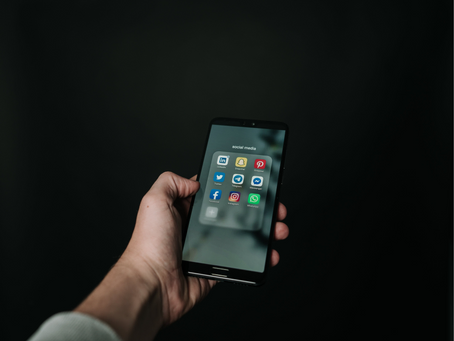Understanding the Divide: How Science Influencers Shape Science Perceptions
Written by Andrea Isabel López
Title: How Science Influencers Polarize Supportive and Skeptical Communities Around Politicized Science: A Cross-Platform and Over-Time Compariso
Author(s) and Year: Sedona Chinn, Dan Hiaeshutter-Rice, Kaiping Chen; April 2023
Journal: Political Communication (closed access)
TL;DR: Science influencers have a strong following and the power to sway public opinions among their followers. This article explores their impact on the divide between science-supportive groups and skeptics. The article also explores how science influencers nurture their communities and followers. Overall, the article found that science influencers rely on identity language, or out-group (e.g. they, them) and in-group (e.g. we, us) language, to communicate with their communities. This language inadvertently promotes a divide and further politicizes and polarizes science.
Why I chose this paper: The focus on science influencers is what drew me to this paper. I’m very concerned about science polarization but never considered exploring this idea while focusing on science influencers. Reviewing this article made me realize that I have a bias and tend to associate influencers with beauty, fashion, or wellness, not science. When really, science influencers have an outsized role in swaying opinions on science.
Like it or not, the rotating pool of social media influencers is here to stay. Many have a significant following who view their videos, posts, and stories and share their content with friends and family. Influencers also regularly engage with their followers through the comment and message functions, becoming a trusted source of information for some or just a go-to place of entertainment for others. While our image of what an influencer is might be limited to sports, beauty, fashion, or wellness, many science influencers have a strong following and the ability to sway public opinion.
Some science influencers are reputable, academically trained scientists like Bill Nye. Others, like Dr. Oz, share misinformation and even controversial statements. As science communicators, it is important to look at the power of influence that these social media actors have on their audiences. That is just what lead author Sedona Chinn and her colleagues sought to do.
Chinn and colleagues focused on:
- Understanding how science influencers used in-group (e.g. we, us) and out-group (e.g. they, them) language and how sentiment, or how positive or negative a post was, played into this
- Exploring if identity language appears more in competitive and interactive social media channels like Twitter or independent or less interactive media channels like Instagram
- Looking into how engagement metrics are impacted by their language choices
Methods
The article authors had to first settle on a definition for what constitutes a science influencer. They landed on individuals who focus on science communication as an essential part of their platform. This contrasts from influencers who might occasionally post science content. The group of influencers whose social media posts were analyzed in this project consisted of science influencers identified by previous research, journalistic articles, and marketing sources. A total of 64 Instagram profiles, 47 Facebook pages, and 99 Twitter accounts were selected for the study.
Social media posts for Meta-affiliated accounts (e.g. Instagram and Facebook) were collected through CrowdTangle, allowing researchers to access historical data from these accounts. Twitter data was collected via Twitter Academic Researcher API, which provides for a similar download of data.
When it comes to identifying group identity language over time, referring to out-group and in-group language, the researchers looked for keywords like “we” and “they” in the posts they had collected. Chinn and colleagues looked at the frequency with which this language was used. For sentiment, they counted the number of positive words like “heartwarming” or “love” and subtracted the total of negative words like “destroy.” This total number was divided by the total number of words in the post and then multiplied by 100. The higher the number, the more positive the post was.
Results
Over time, the use of outgroup language has increased among science influencers in all social media platforms. Meanwhile, the use of in-group language like “we” had no significant change. During significant events, like COVID or the 2021 United States withdrawal from Afghanistan, there is a significant increase in outgroup pronouns.
Independent social media channels like Instagram have a higher use of group identity language overall, especially group-affirming language like “we” and “our.” While Facebook and Twitter had a lower proportion of in-group and out-group language, political actors and associations were more commonly associated with this language. In-group language on Instagram was usually associated with less political organizations, like Harvard or NASA, as identified by the authors.
When it comes to sentiment and identity language, Twitter and Facebook posts showed a more significant difference in sentiment between in-group and out-group pronouns. More specifically, posts using in-group language were more positive, while out-group pronoun usage tended to be more negative.
Finally, out-group pronouns garnered more engagement with followers across all the platforms.
Takeaways
These findings suggest that science influencers rely on identity language to nurture their communities. By relying on out-group and in-group pronouns, influencers inadvertently promote a divide that further politicizes and polarizes science. This language creates a clear sense of who is in your group and who is out. While at times this language can unify their followers around a shared topic or idea, the spread of polarization surrounding science makes this language usage and divide concerning. As science communicators, we need to take science influencers’ impact seriously and not only learn from their successes but also identify ways to combat the spread of negative content that promotes a divide between science-supportive groups and skeptics. Even if expertise and legitimacy among science influencers vary, the influence they exercise on their followers is significant and shouldn’t be dismissed.
Edited by: Scout Barker and Niveen AbiGhannam
Cover image credit: Magnus Mueller

